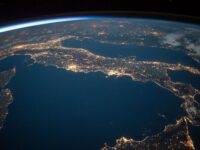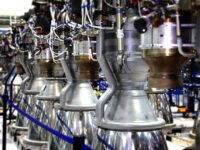Creating a home away from home: Architectural engineering in outer space
By Annabelle Mathers, Civil Engineering, 2022

On Earth, structures serve a larger purpose than simply shielding us from the environment; they affect lifestyle patterns, health, psychological response, and adaptability. Those same qualities apply to structures on celestial bodies other than Earth. Not only must architectural engineering in outer space withstand extreme environments, but it must address the new strain on the lifestyle, resources, health, and transportation of astronauts.
The lack of familiar physics and living patterns outside of Earth necessitates that extraterrestrial buildings compensate through enhanced structure tailored toward astronaut lifestyles. These buildings must provide a sense of stability through both practical and self-sufficient design, while allowing flexibility and adaptability within human lives. Unfortunately, there are many limitations on building material and setup, pushing experts to instead stretch the limits of scientific imagination and resourcefulness. Thus, conventional structure and limitations are both redefined in space.
These buildings must provide a sense of stability through both practical and self-sufficient design, while allowing flexibility and adaptability within human lives.
Before the architectural features of extraterrestrial buildings can be discussed, experts face the stringent limitations of another obstacle: material transportation. Launching large amounts of heavy materials is not physically, nor economically, efficient considering current technology. Many experts continue to design buildings formed by on-site 3D printers, which use condensed, fluid materials that are far less difficult to transport than, say, a steel beam. The partially autonomous and self-assembling nature of 3D printing minimizes the need for humans and the bulk of prefabricated structures on weight-sensitive spacecrafts, and during construction.
This burden can be further alleviated by utilizing in-situ materials for the 3D printing process from the surrounding environment. In 2004, Dr. Behrokh Khoshnevis of the University of Southern California established Contour Crafting, an accelerated 3D printing technique often tailored toward using Martian dust as printing material. A team at Northwestern University also mimicked Martian soil in a 2015 study, where researchers painstakingly devised a sulfur-based concrete sourced from extraterrestrial sites. By self-sufficiently adapting to the natural resources of celestial bodies, experts seek to reduce the amount of materials in need of transport, and the dependency on Earth’s own resources.
The focus on 3D printing using in-situ materials often opposes another popular proposal for extraterrestrial structures: inflatable materials. There are concerns that radiation on other planets with less-protective atmospheres, particularly Mars, may degrade polymers in stretchy materials. However, this issue does not prevent the further pursuit of inflatable solutions. Typically, inflatable designs consist of a thin frame tightly encased in a multilayer, polymer skin, much like an extreme camping tent. This setup maximizes volume of living space while minimizing framing, allowing for more open spaces that are adaptively applicable to many configurations and purposes. A balance of compartmentalized, personal space, and open, airy space is important to the mental health of astronauts. Privacy and spatial focus are just as vital as the avoidance of claustrophobia.
Different compositional additives to the inflatable skin can improve resistance to radiation, as well as provide versatile architecture. For example, a group of European universities developed Self-Deployable Habitats for Extreme Environments (SHEE), which uses robotic self-assembly to combine inflatable material with an inflexible outer shell for increased environmental protection. These small, circular pods are very minimalistic, using multipurpose rooms with specialized wall textures and light emitters to create a practical, but visually stimulating interior. In most designs, specialized LED lighting mimics natural lighting seen on Earth. This mimicry is critical toward fostering a less aesthetically sterile environment in which astronauts can thrive mentally and physically by maintaining a natural circadian rhythm.
As mankind ventures further into unknown space, the complexity and diversity of architectural applications may continue to increase exponentially.
A similar multifunctionality, and avoidance of sterility, exists in non-inflatable structures. For example, NASA’s 2015 3D-Printed Habitat Challenge notably featured a winner, dubbed the “Ice House,” built by teams from Space Exploration Architecture and Clouds Architecture Office. Inspired to use the confirmed existence of water on Mars as their in-situ material, the teams developed an above-ground structure with a semi-translucent ice shell to deflect radiation, facilitate light passage, and allow blended transitions from outdoor to indoor areas. Much like other designs, the architectural curvature creates an illusion of greater interior space. Developers often incorporate hydroponic gardens for oxygen and visual stimulation. Furthermore, multilevel buildings infuse recreation, exercise, and observational research areas that collectively help alleviate the physical and isolative strains of extraterrestrial confinement.
Evidently, the engineering of structures in outer space brings forth diverse designs; however, as mankind ventures further into unknown space, the complexity and diversity of architectural applications may continue to increase exponentially. Through all of this intense adaptation and preparation, the ultimate objective remains true: to simply feel at home as we travel from one celestial speck to another in this vast universe.
Construction and Building Materials (2016). DOI: 10.1016/j.conbuildmat.2016.05.046





